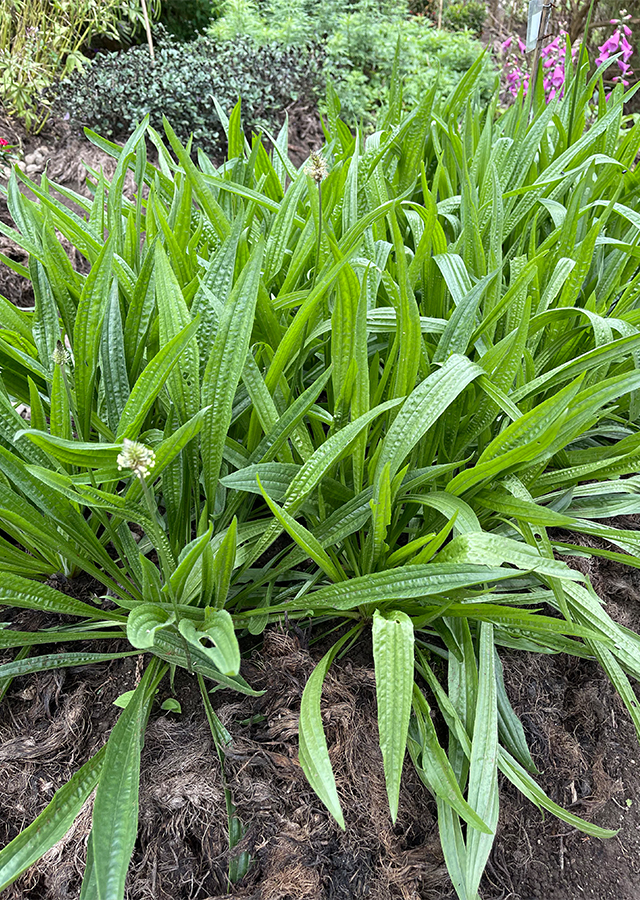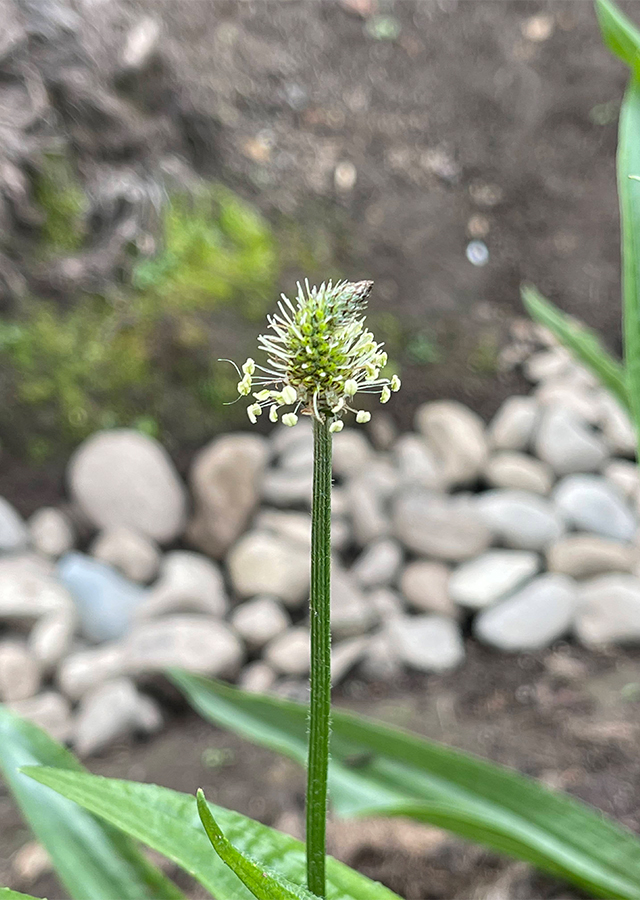Traditional Herbs from Plantago lanceolata
wound
- Take enough longspoon leaves, wash them until clean.
- Crush it until it becomes a paste.
- Put the leaf paste on the wound to stop bleeding.
eye_infection
- Prepare enough longspoon leaves wash until clean.
- Boil until boiling.
- Let it warm/cold.
- Wash your eyes using the boiled water.
What is Plantago lanceolata Looks like??



Parts of Plantago lanceolata that could be used
- Leaves", "Seeds", "Roots", "All Parts of the Plant
Plantago lanceolata Distribution
Plantago lanceolata or long spoon leaf is a species native to Europe, North Africa and West and South Asia, but has been introduced very widely in other places such as the states of the United States, Hawaii, Australia and New Zealand, Japan, as well as in many African countries, in where it grows abundantly in the highlands. This species is used by local people as food, a source of ingredients, a thickening agent, a source of fiber, dyes, and medicine. As a food ingredient, the leaves can be consumed, either raw or cooked. The seeds are ground into powder and can also be added to flour in making bread and cakes. The mucilage obtained from the seed coat is an excellent thickener and stabilizer used in the ice cream industry and also in the manufacture of chocolate, as well as an excellent thickener in the cosmetic industry such as lotions. This plant is also a source of cheap gelling material suitable for tissue culture. Long spoon leaves also produce good fiber, which is suitable for textiles, and is also used to produce gold and brown colors. In addition, this species is known to have various pharmacological activities and is known as a traditional medicine commonly used in various countries with various applications, which is believed to have good health benefits.Agroecology of Plantago lanceolata
Longspoonleaf is a common weed on cultivated land and pastures in temperate to subtropical climates, also spreading to tropical regions, where the species is mainly found at medium to higher altitudes. This plant is also commonly found growing on roadsides and wastelands with neutral or basic soil, on a wider range of soil types than some of its close relatives (such as P. major and P. media), but is not found in the hottest and driest grasslands. Suitable climates include climates with winter rainfall (temperate), year-round rainfall (temperate), summer rainfall (temperate), summer rainfall (sub-tropical). It grows successfully in fairly fertile soil in a sunny location, but also in very poor soil.
Morphology of Plantago lanceolata
- Taproot
- Stem contorted, short thick lower stem, round, brown.
- Leaves in basal rosette, spirally arranged, petiolate, rarely sessile, leaf blade linear-lanceolate, to ovate-narrow elliptical, narrows gradually to the petiole, leaf margins are flat or shallowly dentate, glabrous, leaf tips are acute or acuminate.
- Flowers bisexual, inconspicuous, corolla 4-lobed, tubular, almost as long as the surrounding petals. Corolla tube about 2 - 3 mm, glabrous, corolla lanceolate to ovoid, pointed or pointed. Stamens 4, prominent, conspicuous, 3-5 mm long, anthers white with a yellow tinge. Scape erect. Inflorescence spike (spicate), cylindrical spike to round, up to 4(-8) cm long.
- Fruit is a capsule opening with operculum, ovate, one to two seeds that split in the middle and smooth, boat-shaped seeds with a scar around the middle, brown, slimy.
Cultivation of Plantago lanceolata
- Generative propagation of plants through seeds. Optimal germination has been obtained at 21% soil moisture.
- Best germination for seeds aged 1 - 6 years and at a temperature of 25 - 30\u00b0C.
- Seeds easily stick to animals or humans, which drives the spread.
Plantago lanceolata, more details :
Chemical Content of Plantago lanceolataAlkaloids, steroids, saponins, phenols, tannins, polysaccharides, caffeic acid derivatives (chlorogenic acid, neochlorogenic acid, plantamajoside, acteoside (verbascoside), syringic acid, and vanillic acid), flavonoids (apigenin, luteolin), iridoid glycosides (such as aucubin, catalpol, and asperuloside), terpenoids, coumarin.
Benefits of Plantago lanceolata
Treating itching, headaches, healing wounds, stopping blood flow and encouraging repair of damaged tissue, treating skin inflammation, insect stings, sunburn, boils, swelling, fever, diarrhea, dysentery, nausea, gastritis (inflammation of the stomach wall) and enteritis (inflammation of the small intestine and stomach), stomach ulcers, toothache, irritable bowel syndrome, hemorrhoids, cystitis (inflammation of the bladder due to infection), bronchitis, catarrh, sinusitis, coughs, colds, asthma, ophthalmia (inflammation of the eyes), inflammation of the mouth and throat, rheumatism, helps detoxify the body, treats rattlesnake bites, treats parasitic worms, mouthwash for aphthae, treats fertility problems. It is astringent, demulcent, diuretic, slightly expectorant, laxative, hemostatic. Has activity as antiviral, antibacterial, anti-inflammatory, antioxidant.
Simplisia of Plantago lanceolata
- Prepare enough long spoonful of leaf plant seeds, wash thoroughly with running water then drain.
- Dry in the sun or in an oven temperature\u00a040\u00b0C until the water content\u00a010%.
- Choose using a blender until it becomes powder .
- Store in a clean, airtight container.
Another Facts for Plantago lanceolata :
Synonym of Plantago lanceolataArnoglossum lanceolatum (L.) Gray, Lagopus lanceolatus (L.) Fourr., Plantago argentea Brot.
Habitus of Plantago lanceolata
Herb. Low herb, biennial to annual, growing from short, more or less erect rhizomes, can reach 10 - 60 cm in height
Habitat of Plantago lanceolata
- Roadside
- Grassland
- Land
No comments:
Post a Comment